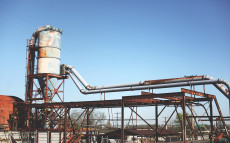- pathfindersAI
- Job Profile
Sheet Metal Workers
Summary
Sheet Metal Workers: A Career in Craftsmanship
What They Do
Sheet metal workers are skilled tradespeople who specialize in the fabrication, installation, and maintenance of thin metal sheets. These metal sheets are commonly used in various applications, including the construction of buildings, the automotive industry, and the creation of HVAC systems. This profession involves the manipulation of metals such as steel, aluminum, and copper, requiring both precision and creativity. From constructing metal roofs and walls to developing intricate duct systems for heating and cooling, the work of sheet metal workers is integral to modern infrastructure.
Job Responsibilities
The responsibilities of a sheet metal worker are multifaceted and can vary depending on the specific industry and job site. Generally, these professionals start by reading and interpreting blueprints or design plans to understand the piece of work required. They measure and mark sheet metal according to precise specifications, ensuring that accuracy is maintained. They then cut, bend, and shape the metal using specialized tools like shears, press brakes, and hammers. Additionally, they may join metal pieces together through welding, riveting, or soldering techniques. Installation tasks require sheet metal workers to fit and secure fabricated metal parts in place, ensuring structural integrity and compliance with safety standards. Maintenance duties often involve repairing or replacing damaged metal parts in existing structures or machinery.
Essential Skills
A career as a sheet metal worker demands a unique blend of technical skills and personal attributes. Proficiency in math is essential, as precise measurements and calculations are a daily part of the job. Attention to detail is crucial, given the fine tolerances involved in metal fabrication. Physical stamina and dexterity are also important, as the work often involves lifting heavy materials and performing repetitive tasks. In addition to these skills, sheet metal workers must have a working knowledge of safety protocols to prevent accidents and ensure a safe working environment. Good communication skills are also vital for collaborating with other tradespeople and following instructions accurately.
Educational Pathways
To become a sheet metal worker, prospective candidates typically undergo a combination of formal education and hands-on training. Many start by earning a high school diploma or equivalent, with coursework in mathematics, shop, and technology providing a solid foundation. From there, aspiring sheet metal workers often enter an apprenticeship program that combines on-the-job training with classroom instruction. These apprenticeships, which usually last between three to five years, are offered by trade unions, industry associations, and some employers. During their apprenticeship, trainees learn about various aspects of the trade, including blueprint reading, welding, and metal fabrication techniques. Some technical colleges also offer certificate and associate degree programs in sheet metal technology, which can provide additional theoretical knowledge and practical skills.
Career Prospects
The career prospects for sheet metal workers are promising, reflecting the essential nature of their work across numerous industries. According to recent labor statistics, employment in this field is expected to grow steadily over the next decade. The demand for sheet metal workers is particularly strong in the construction sector, driven by the need for new buildings and infrastructure maintenance. Additionally, the push for energy-efficient HVAC systems also contributes to job growth in this field. Experienced sheet metal workers can advance to supervisory positions, such as foreman or project manager, or they may choose to specialize in areas like welding or architectural sheet metal work. Some may even start their own businesses, leveraging their skills and experience to offer specialized services.
Conclusion
In conclusion, a career as a sheet metal worker is both challenging and rewarding, offering a blend of technical skill, creativity, and job security. The profession plays a crucial role in building and maintaining the structures and systems that support modern life. With a solid educational foundation, hands-on training, and a commitment to precision and safety, aspiring sheet metal workers can forge a successful and fulfilling career in this vital trade. Whether working on the latest high-rise building or designing custom metal pieces, sheet metal workers leave a tangible mark on the world around them, demonstrating the enduring value of craftsmanship and skill.
Video
Compensation
| State | Median Salary | Median Hourly | Positions |
|---|---|---|---|
| AL | 40,490 | 19.47 | 1,530 |
| AK | 99,590 | 47.88 | 240 |
| AZ | 47,910 | 23.03 | 3,450 |
| AR | 40,230 | 19.34 | 930 |
| CA | 76,860 | 36.95 | 10,280 |
| CO | 54,430 | 26.17 | 2,070 |
| CT | 75,090 | 36.10 | 1,060 |
| DE | 51,010 | 24.52 | 330 |
| DC | 73,210 | 35.20 | 180 |
| FL | 45,990 | 22.11 | 8,100 |
| GA | 53,330 | 25.64 | 3,570 |
| HI | 87,380 | 42.01 | 490 |
| ID | 59,120 | 28.42 | 560 |
| IL | 89,520 | 43.04 | 4,430 |
| IN | 61,250 | 29.45 | 3,880 |
| IA | 49,710 | 23.90 | 1,280 |
| KS | 48,660 | 23.39 | 1,910 |
| KY | 47,750 | 22.96 | 880 |
| LA | 45,210 | 21.73 | 1,150 |
| ME | 52,750 | 25.36 | 980 |
| MD | 61,370 | 29.51 | 1,840 |
| MI | 61,890 | 29.75 | 4,280 |
| MN | 57,900 | 27.84 | 2,600 |
| MS | 45,750 | 22.00 | 1,120 |
| MO | 74,100 | 35.63 | 4,070 |
| MT | 62,030 | 29.82 | 420 |
| NE | 58,660 | 28.20 | 750 |
| NV | 65,180 | 31.34 | 900 |
| NH | 53,320 | 25.63 | 470 |
| NJ | 81,810 | 39.33 | 2,380 |
| NM | 73,720 | 35.44 | 700 |
| NY | 65,050 | 31.27 | 6,010 |
| NC | 49,710 | 23.90 | 2,570 |
| ND | 73,350 | 35.26 | 370 |
| OH | 61,440 | 29.54 | 4,580 |
| OK | 61,340 | 29.49 | 2,750 |
| OR | 65,650 | 31.56 | 2,460 |
| PA | 63,040 | 30.31 | 2,470 |
| RI | 56,070 | 26.96 | 490 |
| SC | 49,210 | 23.66 | 1,170 |
| SD | 47,170 | 22.68 | 530 |
| TN | 50,290 | 24.18 | 2,440 |
| TX | 51,030 | 24.53 | 9,390 |
| UT | 56,800 | 27.31 | 2,000 |
| VT | 48,670 | 23.40 | 300 |
| VA | 56,220 | 27.03 | 2,930 |
| WA | 85,630 | 41.17 | 3,780 |
| WV | 69,660 | 33.49 | 370 |
| WI | 63,190 | 30.38 | 3,180 |
| WY | 56,320 | 27.08 | 220 |
Similar Occupations
In this area you will find other occupations that are close to the one you were viewing in tasks, knowledge and work environment. If the primary job profile you are viewing isn't quite to your liking, take a look around and see what else is available.
Basic and Premium Accounts have more alternative occupations available than the Free account.

Aircraft Structure, Surfaces, Rigging, and Systems Assemblers - 51-2011.00
Aircraft Structure, Surfaces, Rigging, and Systems Assemblers are responsible for constructing, assembling, and installing the mechanical components and systems of aircraft according to blueprints, specifications, and quality standards. They ensure the structural integrity and functionality of the aircraft through precise assembly of surfaces, rigging, and integrated systems, including electrical and hydraulic components.
-
$61,240/yr
Median Pay -
29,810
Number of Jobs

Carpenters - 47-2031.00
A carpenter constructs, installs, and repairs building frameworks and structures, such as stairways, doorframes, partitions, and rafters, made from wood and other materials. They also read blueprints and measure, cut, and shape wood, plastic, and other materials to complete construction projects.
-
$56,350/yr
Median Pay -
700,290
Number of Jobs